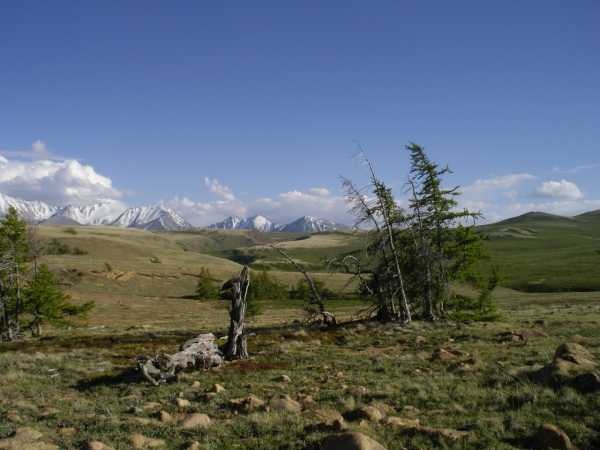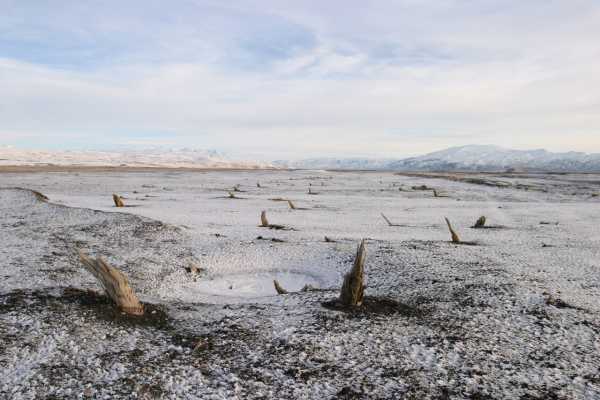Radiocarbon: a global time marker in tree-rings
Cosmic-ray events, such as exceptionally large solar eruptions, are recorded globally in trees. This is what 67 scientists from 56 institutions under the leadership of the Laboratory of Ion Beam Physics at ETH Zurich and the WSL Birmensdorf show in a study based on more than 400 radiocarbon analyses of 44 tree-ring records.
The scientist found in tree-rings from 775 CE and 993 CE, respectively, a globally synchronous rise in radiocarbon (C-14) concentrations, compared to the respective previous year. The authors show with model calculations that the observations are best described by a short cosmic-ray event hitting the earth uniformly. It is assumed that high-energetic solar particles from large solar eruptions are responsible for the increase.
Subfossil trees analysed
 Subfossil tree in the volcanic region of Iceland (Photo: Olafur Eggertsson, Mogilsa)
Subfossil tree in the volcanic region of Iceland (Photo: Olafur Eggertsson, Mogilsa) Drift wood in sedimentary deposits in Siberia (Photo: Ulf Büntgen, Cambridge)
Drift wood in sedimentary deposits in Siberia (Photo: Ulf Büntgen, Cambridge) Adonis, the oldest living tree in Europe (Greece)
Adonis, the oldest living tree in Europe (Greece)
(Photo: Paul J. Krusic, Cambridge)

The globally synchronous C-14 signal allows for the first time to demonstrate the annual dating precision of the world’s longest tree-ring chronologies, thereby rejecting any claims of systematically missing tree-rings following large volcanic eruptions. It is furthermore possible to synchronize with other important but less precisely dated palaeo-achives. As an example, horizons of polar ice core records can be linked to the cosmic events with Be-10, another radionuclide produced by cosmic rays.
(Text: Lukas Wacker, Hans-Arno Synal, Marcus Christl and Ulf Büntgen)
Reference
Büntgen U et al.: Tree rings reveal globally coherent signature of cosmogenic radiocarbon events in 774 and 993 CE. Nat. Commun. 9, 3605 (2018). doi: external page 10.1038/s41467-018-06036-0

